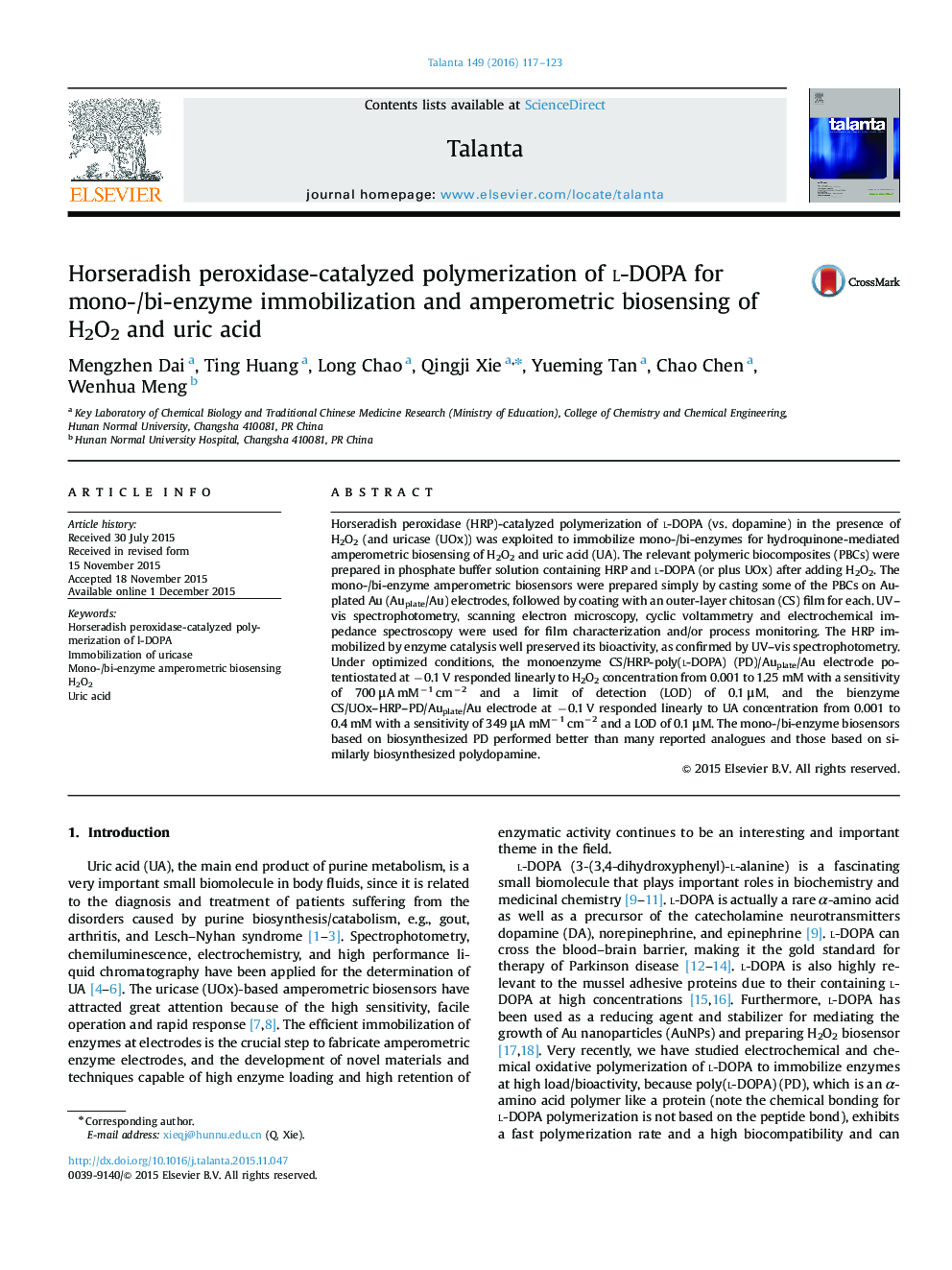| Article ID | Journal | Published Year | Pages | File Type |
|---|---|---|---|---|
| 1241813 | Talanta | 2016 | 7 Pages |
•Horseradish peroxidase-catalyzed polymerization of l-DOPA (vs. dopamine).•Enzyme-immobilization protocols.•Amperometric enzyme electrode.•Excellent mono-/bi-enzyme amperometric biosensing performance for H2O2/uric acid.
Horseradish peroxidase (HRP)-catalyzed polymerization of l-DOPA (vs. dopamine) in the presence of H2O2 (and uricase (UOx)) was exploited to immobilize mono-/bi-enzymes for hydroquinone-mediated amperometric biosensing of H2O2 and uric acid (UA). The relevant polymeric biocomposites (PBCs) were prepared in phosphate buffer solution containing HRP and l-DOPA (or plus UOx) after adding H2O2. The mono-/bi-enzyme amperometric biosensors were prepared simply by casting some of the PBCs on Au-plated Au (Auplate/Au) electrodes, followed by coating with an outer-layer chitosan (CS) film for each. UV–vis spectrophotometry, scanning electron microscopy, cyclic voltammetry and electrochemical impedance spectroscopy were used for film characterization and/or process monitoring. The HRP immobilized by enzyme catalysis well preserved its bioactivity, as confirmed by UV–vis spectrophotometry. Under optimized conditions, the monoenzyme CS/HRP-poly(l-DOPA) (PD)/Auplate/Au electrode potentiostated at −0.1 V responded linearly to H2O2 concentration from 0.001 to 1.25 mM with a sensitivity of 700 μA mM−1 cm−2 and a limit of detection (LOD) of 0.1 μM, and the bienzyme CS/UOx–HRP–PD/Auplate/Au electrode at −0.1 V responded linearly to UA concentration from 0.001 to 0.4 mM with a sensitivity of 349 μA mM−1 cm−2 and a LOD of 0.1 μM. The mono-/bi-enzyme biosensors based on biosynthesized PD performed better than many reported analogues and those based on similarly biosynthesized polydopamine.
Graphical abstractFigure optionsDownload full-size imageDownload as PowerPoint slide
